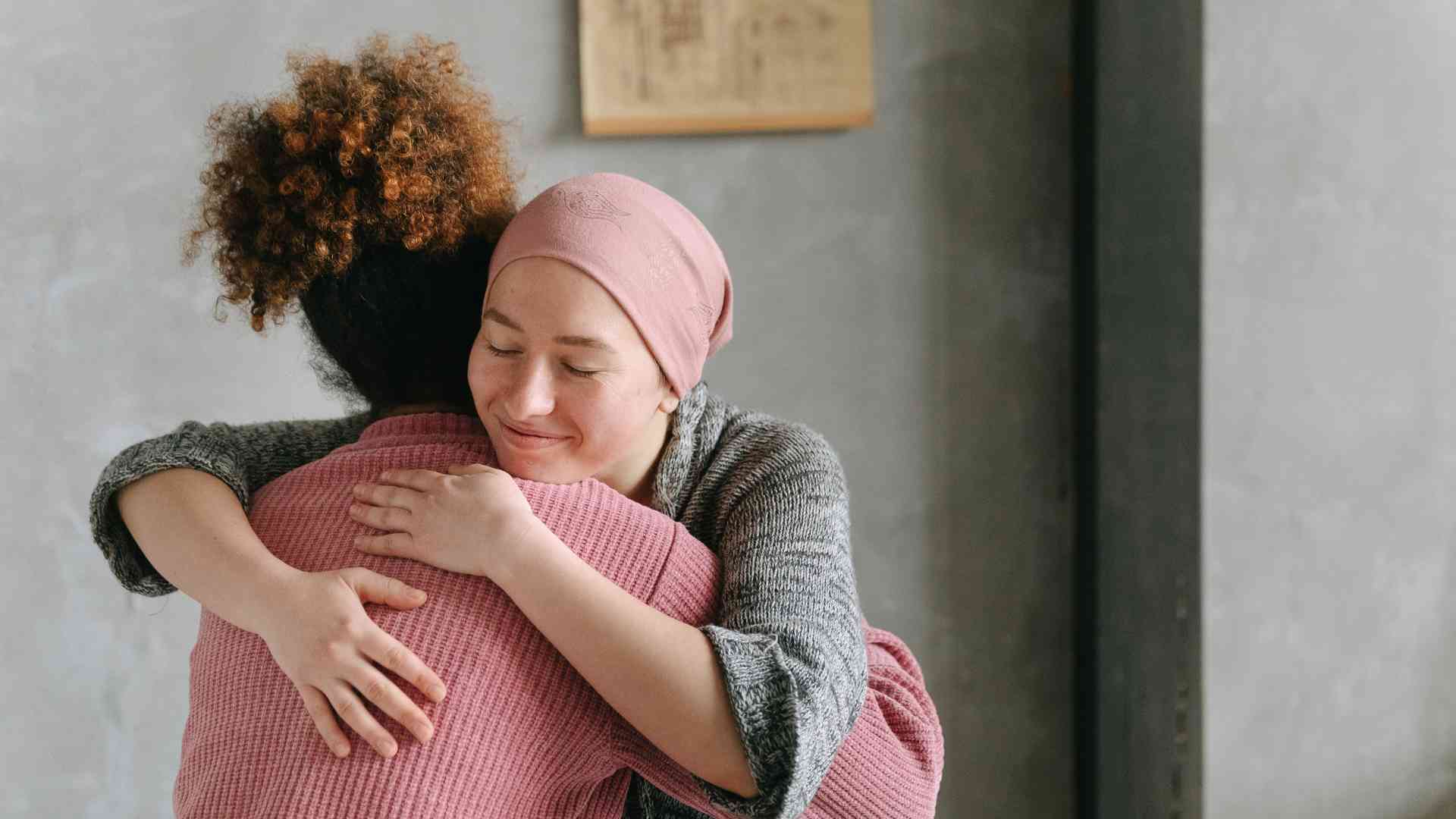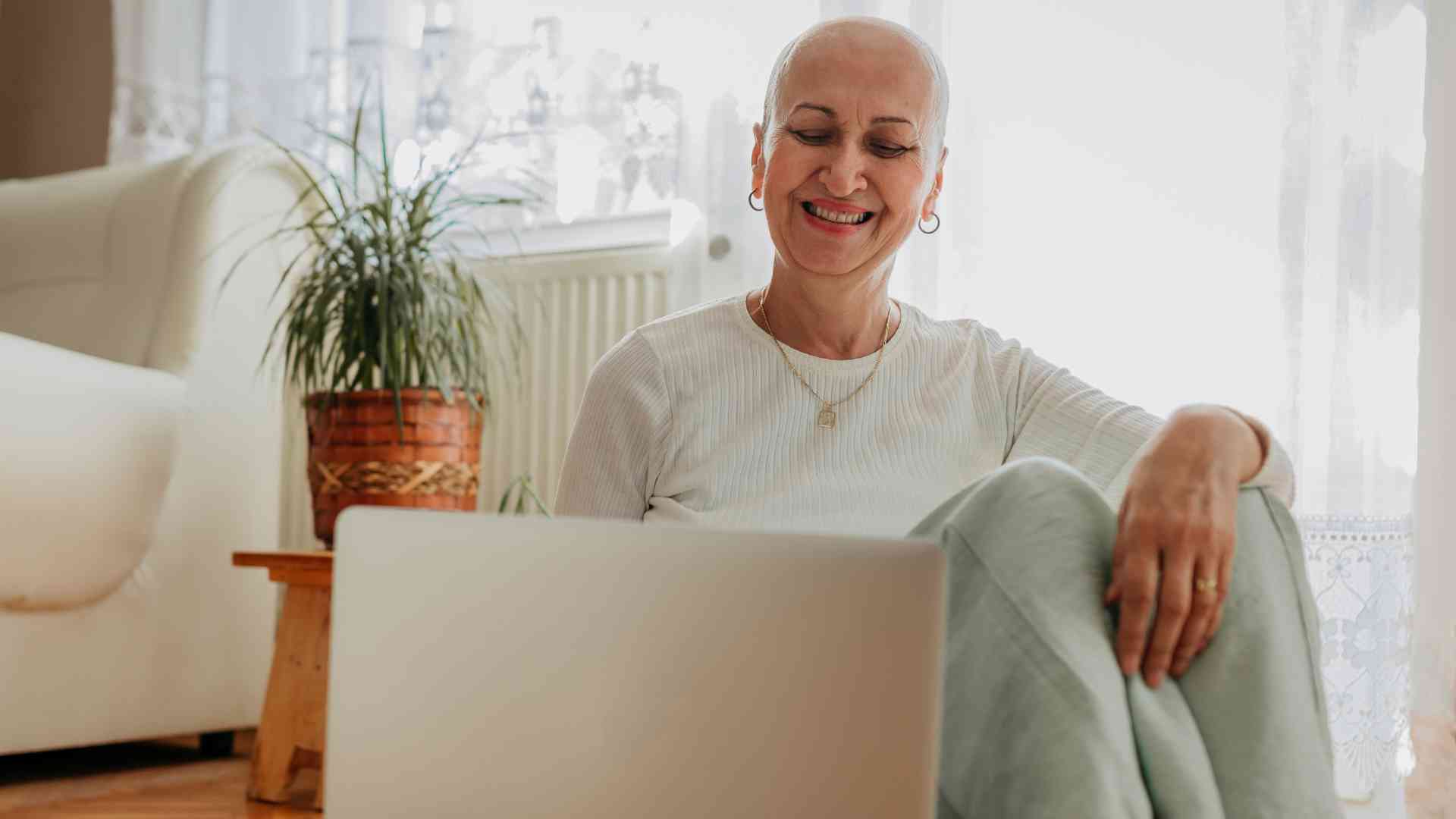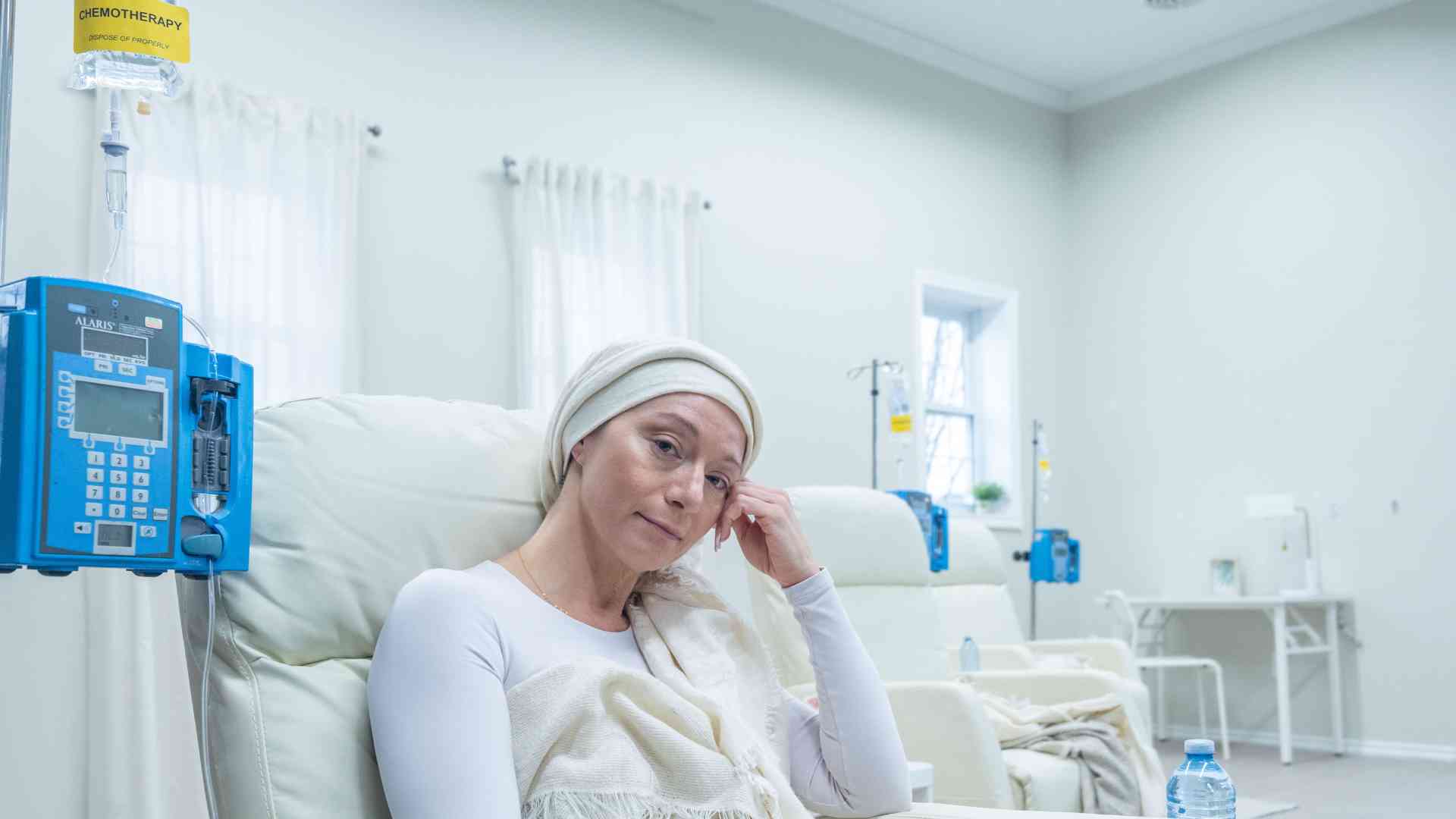The journey through chemotherapy is a profound and challenging experience, marked by both emotional and physical hurdles that individuals must overcome. This medical treatment, while essential for combating various forms of cancer, often brings about an array of distressing side effects that can take a toll on a patient’s overall well-being. Among these effects, the loss of hair stands as one of the most impactful and visible changes that patients may encounter. Beyond being a mere cosmetic concern, hair loss holds immense emotional significance, contributing to a sense of identity disruption and vulnerability.
This article delves into the intricate relationship between chemotherapy and hair loss, shedding light on the underlying mechanisms that trigger this adverse effect. By understanding the scientific basis of this phenomenon, we can begin to explore potential strategies and interventions to alleviate its psychological and emotional repercussions. As we navigate the realms of medical science and personal experiences, we aim to provide insights into how individuals and their caregivers can approach this aspect of chemotherapy with greater understanding and resilience.
The Mechanism Behind Chemotherapy-Induced Hair Loss
Chemotherapy, a cornerstone of cancer treatment, operates by employing powerful drugs to halt or slow down the proliferation of rapidly dividing cancer cells. Its primary objective is to eradicate these abnormal cells that have lost their ability to regulate growth, thus inhibiting the spread of malignancy. However, while its effects on cancer cells are well-known, chemotherapy’s impact extends beyond the tumor site.
Chemotherapy is designed to be systemic, circulating throughout the body to target any rapidly dividing cells. This includes not only cancer cells but also other healthy cells with high rates of division, such as those found in the bone marrow, digestive tract, and hair follicles. Hair follicles are particularly susceptible due to their rapid growth rate, making them unintended casualties of chemotherapy.
The disruption of the hair growth cycle occurs as chemotherapy drugs indiscriminately affect dividing cells, including those responsible for hair production. Normally, hair follicles undergo a cyclic process of growth, rest, and shedding. Chemotherapy interferes with this delicate balance by pushing a larger number of hair follicles into the resting phase, called telogen. As a result, hair thinning and eventual loss become noticeable side effects. It’s important to note that not all chemotherapy drugs cause hair loss, and the extent and pattern of hair loss can vary depending on the specific drugs and doses used.
Chemotherapy’s mechanism of action involves targeting rapidly dividing cells, inadvertently affecting hair follicles and disrupting the natural hair growth cycle. Understanding this process sheds light on the reasoning behind chemotherapy-induced hair loss and underscores the need for comprehensive approaches to mitigate its emotional and psychological impact on patients undergoing cancer treatment.
Anagen Effluvium as the Type of Hair Loss Caused by Chemotherapy
Anagen effluvium stands as a distinctive form of hair loss triggered by the potent effects of chemotherapy. Unlike traditional hair loss, which occurs gradually over time, anagen effluvium is marked by a rapid and often dramatic shedding of hair shortly after the initiation of chemotherapy.
Chemotherapy drugs exert their influence on hair follicles by disrupting the anagen phase, the active growth stage of the hair cycle. In this phase, hair cells multiply rapidly and hair shafts lengthen. However, the mechanism of action of chemotherapy, aimed at hindering the division of rapidly growing cells, inadvertently affects not only cancer cells but also normal, healthy cells, including those within hair follicles.
The interruption of the anagen phase leads to a sudden halt in hair shaft production. Within just a few weeks of commencing chemotherapy, individuals undergoing treatment may experience a swift onset of hair shedding. This abrupt loss can be emotionally distressing, as patients witness clumps of hair falling out during routine activities like showering or brushing. The impact on one’s appearance and sense of self can be profound, adding an additional layer of challenges to an already demanding journey.
As anagen effluvium manifests shortly after treatment initiation, its occurrence is often anticipated. Patients and healthcare providers alike can work together to prepare for and manage this specific side effect, offering emotional support and exploring potential interventions to mitigate its impact. Through understanding the mechanisms behind anagen effluvium, we take a step closer to addressing the complexities of chemotherapy-induced hair loss and providing comprehensive care for individuals navigating this intricate landscape.
Psychological Impact of Chemotherapy Hair Loss
The psychological impact of hair loss during chemotherapy is a deeply profound and often underestimated aspect of the cancer treatment journey. For individuals undergoing this challenging process, the sudden and often visible loss of hair can evoke a range of intense emotions, amplifying the already considerable emotional strain that accompanies a cancer diagnosis.
Hair loss is not merely a superficial concern; it is closely tied to one’s sense of identity and self-esteem. Hair often serves as an expression of personal style and can play a significant role in how individuals perceive themselves and how they are perceived by others. The loss of hair can lead to feelings of vulnerability, insecurity, and a sense of disconnection from one’s familiar self. It can be a stark reminder of the illness and the changes it brings, further complicating the emotional landscape of cancer treatment.
Addressing the psychological toll of chemotherapy-induced hair loss is crucial for providing holistic patient care. Recognizing the emotional challenges and facilitating open discussions about body image and self-esteem can help patients navigate this aspect of treatment with greater resilience. Healthcare professionals, as well as support networks, play an essential role in fostering an environment where patients feel safe expressing their concerns and seeking emotional support.
In the realm of cancer care, addressing physical well-being is just as vital as tending to emotional needs. Integrating interventions that help manage the physical aspects of hair loss, such as scalp cooling techniques to reduce hair loss during chemotherapy, can contribute to an improved quality of life for patients. However, it’s equally important to provide resources that focus on bolstering emotional well-being, including counseling, support groups, and educational materials that shed light on the psychological dimensions of hair loss.
The emotional toll of chemotherapy-induced hair loss is a significant aspect of the cancer treatment journey. By acknowledging the impact on identity and self-esteem and fostering a comprehensive approach that addresses both physical and emotional well-being, healthcare providers can better support individuals as they navigate the complex challenges of cancer treatment.
Can Chemotherapy-Induced Hair Loss Be Prevented?

Preventing chemotherapy-induced hair loss entirely presents a challenging dilemma due to the nature of chemotherapy’s mechanism of action. Chemotherapy drugs are designed to target rapidly dividing cells, which includes both cancer cells and certain normal cells like hair follicle cells. As a result, completely preventing hair loss while effectively treating cancer is a complex balancing act.
However, innovative approaches such as scalp cooling, commonly known as cold caps, have shown promise in minimizing hair loss during chemotherapy. Scalp cooling involves the use of specialized caps that are chilled to very low temperatures before, during, and after chemotherapy sessions. By constricting blood vessels in the scalp, these cold caps aim to reduce the amount of chemotherapy drugs that reach the hair follicles, thereby potentially preserving hair growth.
It’s important to note that while scalp cooling can be effective for some patients, it’s not universally applicable. The effectiveness of scalp cooling can depend on factors such as the type of chemotherapy drugs used, their dosages, and the individual’s overall health. Chemotherapy regimens that are particularly aggressive or use drugs that are more likely to cause hair loss might not be suitable for scalp cooling. Therefore, the decision to use scalp cooling should be made in consultation with a healthcare provider who can assess its potential benefits and limitations for each patient’s specific situation.
While preventing chemotherapy-induced hair loss completely remains a challenge, advancements like scalp cooling offer a promising avenue to minimize this side effect. Balancing the need for effective cancer treatment with the desire to preserve one’s appearance underscores the complexity of cancer care. By exploring options like scalp cooling and understanding their limitations, patients and healthcare providers can work together to make informed decisions that align with both medical needs and emotional well-being.
Strategies to Manage Hair Loss During Chemotherapy
Navigating hair loss during chemotherapy requires a proactive and thoughtful approach that addresses the emotional and practical aspects of this challenging experience. Preparing for hair loss before beginning chemotherapy can help individuals ease into the transition and maintain a sense of control. Open discussions with healthcare providers about the likelihood of hair loss and available coping strategies can offer patients a sense of empowerment in facing this potential side effect.
One practical step individuals can take is opting to cut their hair short before starting chemotherapy. This preemptive measure can make the eventual hair loss less emotionally jarring and can also facilitate a smoother transition as hair begins to thin. Shorter hair is often easier to manage during periods of shedding, and the change in appearance might be less stark.
Exploring various options for covering the head is another important aspect of managing hair loss. Wigs, for instance, can provide a sense of normalcy and privacy, allowing individuals to maintain their preferred look. High-quality wigs that resemble natural hair can offer a boost in confidence and comfort. Headscarves and hats also serve as fashionable and comfortable alternatives, offering individuals the chance to express their personal style while keeping their head covered.
Engaging with support groups, both in-person and online, can provide a sense of community and camaraderie among individuals who are experiencing similar challenges. Sharing experiences, tips, and emotional support can make the journey through chemotherapy-induced hair loss more manageable.
Preparing for hair loss before undergoing chemotherapy involves a combination of practical decisions and emotional support. By discussing options with healthcare providers, embracing changes in appearance, and exploring various ways to cover the head, individuals can navigate this aspect of cancer treatment with greater confidence and resilience.
Post-Treatment Hair Regrowth: What to Expect
After the completion of chemotherapy, individuals often experience a hopeful and gradual process of hair regrowth. As the body begins to recover from the effects of treatment, including the impact on rapidly dividing cells such as hair follicles, the natural hair growth cycle is gradually restored.
Regrowth usually begins within a few weeks to a couple of months after the completion of chemotherapy. Initially, the newly growing hair might appear thin, soft, and almost fuzzy in texture. Over time, the thickness of the hair typically increases, and the texture becomes more akin to the individual’s original hair. It’s important to note that hair regrowth is a gradual process, and it might take several months for the hair to fully return to its pre-chemotherapy state.
It’s also common for the regrown hair to have some differences in color and texture compared to what individuals were accustomed to before chemotherapy. Hair color might be slightly different, sometimes appearing darker or lighter than before. Similarly, the texture might temporarily change, with individuals finding their hair to be curlier or straighter than they were used to.
Managing expectations about the regrowth process is crucial. While the process of hair regrowth signifies a positive step toward recovery, it’s important to remember that it might take time for the hair to return to its previous state, both in terms of thickness and texture.
Understanding the stages of post-treatment hair regrowth can help individuals anticipate and embrace the changes that accompany this phase of recovery. By being patient and allowing the natural hair growth cycle to unfold, individuals can find comfort in the gradual return of their hair, even if it might appear slightly different in color and texture than before.
Significance of Emotional Support During the Chemotherapy Journey

Emotional support plays a pivotal role throughout the chemotherapy journey, particularly when facing the challenges of hair loss. The physical toll of cancer treatment is often accompanied by a rollercoaster of emotions, making a strong support system essential for maintaining mental and emotional well-being.
Support groups can provide a safe and empathetic space for individuals to share their experiences, fears, and triumphs. Connecting with others who are navigating similar challenges can foster a sense of camaraderie and help individuals feel less isolated. Sharing stories, advice, and coping strategies within these groups can be tremendously comforting and empowering.
Counseling is another valuable resource, offering individuals a chance to explore and process their emotions with a trained professional. Therapy can equip patients with coping mechanisms to manage stress, anxiety, and depression that may arise during treatment. This form of support can be particularly beneficial when navigating complex emotions tied to body image and self-esteem.
Connecting with others who have experienced hair loss due to chemotherapy can provide a unique form of support. Hearing firsthand accounts of how individuals coped with similar challenges and regained their confidence can offer inspiration and practical insights. This connection can help normalize the experience and provide a perspective that reassures individuals they are not alone on this journey.
It’s paramount to prioritize mental and emotional well-being alongside physical recovery. Recognizing and addressing the emotional toll of hair loss and chemotherapy is crucial for maintaining a positive outlook and resilience. By seeking out and embracing emotional support, individuals can cultivate a sense of strength and empowerment that aids them in navigating the complexities of cancer treatment.
Nurturing Self-Confidence: Beyond Hair Loss

The journey of nurturing self-confidence extends far beyond the realm of physical appearance, especially when confronted with the challenges of hair loss during chemotherapy. While hair loss can impact how we perceive ourselves, it’s crucial to recognize that true confidence emanates from a deeper wellspring within us.
Rediscovering self-confidence involves tapping into the aspects of ourselves that transcend our physical form. Engaging in activities that bring joy, fulfillment, and a sense of accomplishment can help redirect our focus away from appearance-related concerns. These activities remind us of our capabilities and passions, reminding us that our worth extends beyond our outward appearance.
Amid the trials of chemotherapy, finding ways to foster self-compassion and self-love is essential. It’s important to acknowledge the strength and resilience that it takes to navigate such a challenging journey. Every step taken in the face of adversity is a testament to one’s inner fortitude. By acknowledging and celebrating these moments of strength, individuals can cultivate a sense of empowerment that goes beyond external appearances.
Moreover, surrounding oneself with a supportive network of friends, family, and fellow survivors can serve as a constant reminder of the value and strength that one possesses. Sharing stories, experiences, and wisdom can provide a fresh perspective and reinforce the understanding that beauty radiates from the inside out.
Nurturing self-confidence beyond hair loss entails embracing the multifaceted aspects of our identity and cultivating inner strength. Engaging in meaningful activities, focusing on personal achievements, and connecting with a supportive community are all integral components of this transformative journey. By recognizing the wellspring of strength within us, we can navigate the challenges of cancer treatment with grace and emerge with a renewed sense of self-confidence that transcends physical appearances.
Watch Can I avoid losing hair while getting chemotherapy? | Video
Top 5 FAQs and answers related to Can Chemotherapy-Related Hair Loss Be Prevented?
Why does hair loss occur during chemotherapy?
Chemotherapy targets rapidly dividing cells, which includes both cancer cells and normal cells like hair follicles. As a result, the hair growth cycle is disrupted, pushing more hair follicles into the resting phase. This interruption leads to the shedding of hair.
Can hair loss due to chemotherapy be prevented completely?
Preventing hair loss completely while undergoing chemotherapy is challenging due to the drugs’ mechanism of action. However, scalp cooling techniques, like cold caps, can reduce the amount of chemotherapy reaching the hair follicles and minimize hair loss for some patients.
What are scalp cooling techniques, and how do they work?
Scalp cooling involves wearing specially designed caps that are cooled to very low temperatures before, during, and after chemotherapy. These cold caps constrict blood vessels in the scalp, reducing blood flow to the hair follicles and potentially preserving hair growth.
Are all chemotherapy regimens suitable for scalp cooling?
Not all chemotherapy regimens are compatible with scalp cooling. The effectiveness of scalp cooling can depend on the specific chemotherapy drugs used, their dosages, and the individual’s overall health. Consulting with a healthcare provider is essential to determine if scalp cooling is a viable option.
Does hair grow back after chemotherapy?
Yes, hair typically starts to regrow after chemotherapy is completed. The regrowth process can take a few weeks to several months. Initially, the regrown hair might appear thin and soft, but it gradually thickens and returns to a more natural texture over time. The color and texture might vary from the person’s original hair.
Conclusion

In conclusion, the journey through chemotherapy often involves grappling with the challenging side effect of hair loss. This phenomenon is primarily a result of chemotherapy’s mechanism, which disrupts the hair growth cycle by affecting rapidly dividing cells, including hair follicles. While complete prevention of hair loss remains a challenge, there are strategies to manage its impact.
Scalp cooling techniques, such as cold caps, offer a potential means of minimizing hair loss for some patients. However, not all chemotherapy regimens are compatible with this approach. Preparing for hair loss by cutting hair short and exploring various head covering options like wigs, headscarves, and hats can help individuals navigate this transition with greater confidence.
During this journey, seeking information and support is crucial. Conversations with healthcare providers, support groups, counseling, and connecting with others who have experienced hair loss can provide valuable insights and emotional assistance. It’s essential to recognize that while hair loss might be a significant challenge, it’s equally important to prioritize overall well-being.
Remember that you’re not alone on this path. Draw strength from your support networks, both from healthcare professionals and loved ones. The process of navigating chemotherapy-induced hair loss can be a transformative journey that reinforces your inner strength and resilience. As you focus on the bigger picture of your health and recovery, you’ll find the courage to face each challenge and emerge stronger on the other side.
Please share this Can Chemotherapy-Related Hair Loss Be Prevented? with your friends and do a comment below about your feedback.
We will meet you on next article.
Until you can read, Can Hair Loss Result from Excessive Weight Loss?
